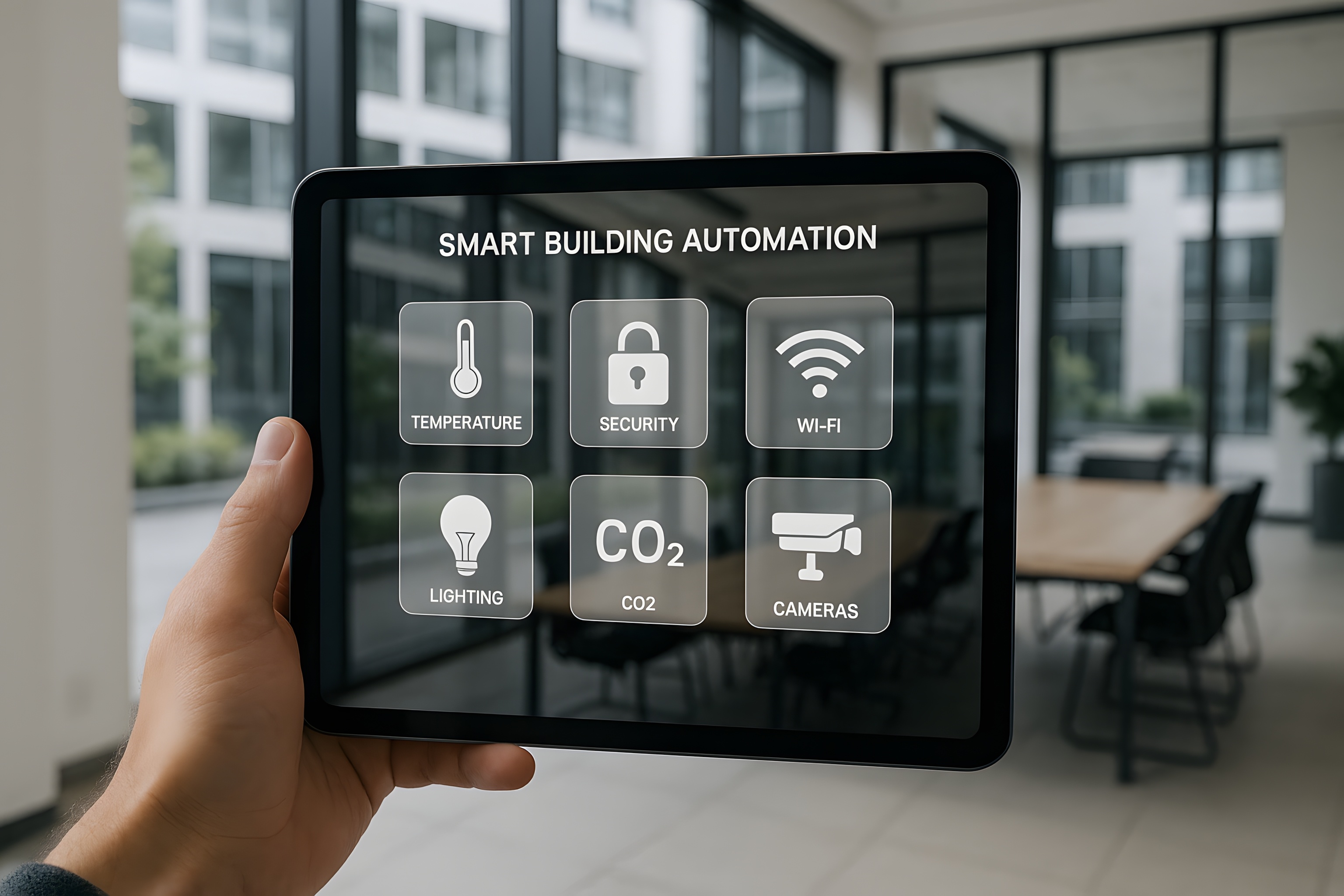We’ve Got You Covered

Lead Generation
Social media Ads, Google ads or totally free lead gen strategies; we have the tried & proven know-how to get you qualified leads that convert.

Social Media Management
Managing your socials doesn't have to be overwhelming. Save time on scheduling content and responding to comments and messages.

Content Creation
Whether you need blog posts, website copy, or social media updates, we can help you stand out from the pack and attract more customers.

Sales Funnels
We specialise in creating a custom funnels that fits your unique needs and helps you convert more leads into customers.

Reputation Management
With our Review Request System™, we can help you build a positive online presence and ensure that your customers see you as the best option.

SMS Marketing
Incredibly effective way to reach new customers, increase loyalty among current customers, and drive more sales at low cost. When done right.

Website Development
We'll work with you to create a website that reflects your unique brand and that will help you stand out from the competition.

Email Marketing
We'll help you create eye-catching emails that will grab your readers' attention, and turn it into action in form of more replies and sales.


Why Smart Building Projects Keep Failing Executives | Accelerate Performance
The numbers don't lie. Execution does.
LoRaWAN deployments are exploding across smart buildings, with the market approaching 1.8 billion devices by 2034. Building automation can deliver a 40% reduction in staffing requirements. The ROI case writes itself.
Yet here's what nobody talks about.
Whilst 90% of executives believe IoT will significantly impact their industry, only 30% succeed in their implementations. The gap between opportunity and execution has become a chasm.
The Real Problem Behind Smart Building Failures
Smart building projects fail because we treat them as technology problems when, in fact, they are leadership problems.
Most executives approach IoT implementations by starting with the technology. They evaluate sensors, compare wireless protocols, and analyse data platforms. Then they wonder why adoption stalls and ROI disappoints.
The successful minority does something different. They start by understanding operational pain points before selecting technologies.
This represents a fundamental shift in strategic thinking. Instead of asking "What can this technology do?" successful leaders ask "What specific problems are we solving?"
Why Traditional Leadership Approaches Fall Short
The challenge runs deeper than strategy. Smart building transformations require leaders who can operate in two modes simultaneously.
You need executives who can maintain existing operations whilst investing in digital transformation. This dual-focus capability is rare. Most leaders excel at either operational excellence or transformation, rarely both.
The complexity multiplies when you consider workforce transitions. Automation might reduce FTE requirements by 40%, but how do you manage that transition without losing institutional knowledge or destroying morale?
These aren't technical challenges. They're leadership challenges that require practical experience, not theoretical frameworks.
The Execution Gap That Separates Success From Failure
Here's what I've learned from working with executives navigating these transformations: success comes down to discipline in execution.
Successful smart building deployments follow a pattern. Leaders identify specific operational pain points first. They build business cases around measurable outcomes, not technology features. They plan workforce transitions before implementing automation.
Most importantly, they understand that technology deployment is a form of change management. The sensors and networks are just tools. The real work happens in how you lead people through transformation.
The executives who succeed treat smart building projects as leadership development opportunities. They use the transformation to build organisational capabilities that extend far beyond the immediate technology implementation.
Moving Beyond the Execution Gap
The smart building boom creates unprecedented opportunities for executives who can execute effectively. The question isn't whether to invest in these technologies. The question is whether you have the leadership capabilities to implement them successfully.
Real-world execution requires more than strategic vision. It demands practical experience in managing complex transformations whilst maintaining operational performance.
The executives who thrive in this environment don't just understand technology. They understand people, processes, and the messy reality of organisational change.
That's where the real competitive advantage lies.
If you need help in this area or just want to chat through plans or challenges, click here to contact us.

Why Smart Building Projects Keep Failing Executives | Accelerate Performance
The numbers don't lie. Execution does.
LoRaWAN deployments are exploding across smart buildings, with the market approaching 1.8 billion devices by 2034. Building automation can deliver a 40% reduction in staffing requirements. The ROI case writes itself.
Yet here's what nobody talks about.
Whilst 90% of executives believe IoT will significantly impact their industry, only 30% succeed in their implementations. The gap between opportunity and execution has become a chasm.
The Real Problem Behind Smart Building Failures
Smart building projects fail because we treat them as technology problems when, in fact, they are leadership problems.
Most executives approach IoT implementations by starting with the technology. They evaluate sensors, compare wireless protocols, and analyse data platforms. Then they wonder why adoption stalls and ROI disappoints.
The successful minority does something different. They start by understanding operational pain points before selecting technologies.
This represents a fundamental shift in strategic thinking. Instead of asking "What can this technology do?" successful leaders ask "What specific problems are we solving?"
Why Traditional Leadership Approaches Fall Short
The challenge runs deeper than strategy. Smart building transformations require leaders who can operate in two modes simultaneously.
You need executives who can maintain existing operations whilst investing in digital transformation. This dual-focus capability is rare. Most leaders excel at either operational excellence or transformation, rarely both.
The complexity multiplies when you consider workforce transitions. Automation might reduce FTE requirements by 40%, but how do you manage that transition without losing institutional knowledge or destroying morale?
These aren't technical challenges. They're leadership challenges that require practical experience, not theoretical frameworks.
The Execution Gap That Separates Success From Failure
Here's what I've learned from working with executives navigating these transformations: success comes down to discipline in execution.
Successful smart building deployments follow a pattern. Leaders identify specific operational pain points first. They build business cases around measurable outcomes, not technology features. They plan workforce transitions before implementing automation.
Most importantly, they understand that technology deployment is a form of change management. The sensors and networks are just tools. The real work happens in how you lead people through transformation.
The executives who succeed treat smart building projects as leadership development opportunities. They use the transformation to build organisational capabilities that extend far beyond the immediate technology implementation.
Moving Beyond the Execution Gap
The smart building boom creates unprecedented opportunities for executives who can execute effectively. The question isn't whether to invest in these technologies. The question is whether you have the leadership capabilities to implement them successfully.
Real-world execution requires more than strategic vision. It demands practical experience in managing complex transformations whilst maintaining operational performance.
The executives who thrive in this environment don't just understand technology. They understand people, processes, and the messy reality of organisational change.
That's where the real competitive advantage lies.
If you need help in this area or just want to chat through plans or challenges, click here to contact us.
Let our happy customers tell their story
We think our courses and coaching are great, but our customers should have the last word. Here is a selection of endorsements.

Accelerating Your Performance Every Day
Accelerate Performance is on a mission to enable people and business to achieve great things through Advisory, Coaching, Consulting, Executive Leadership Development, and Training. .
@ Copyright 2025 - Accelerate Performance
Made with ♥ In London, GB
